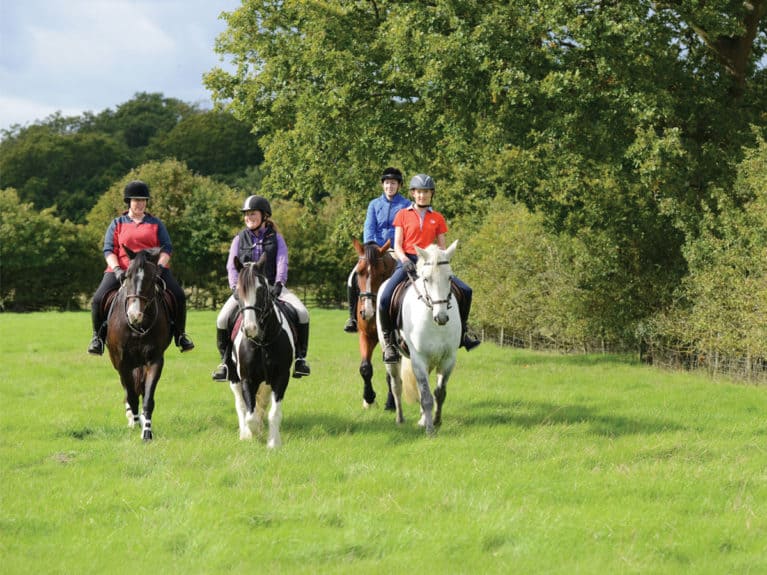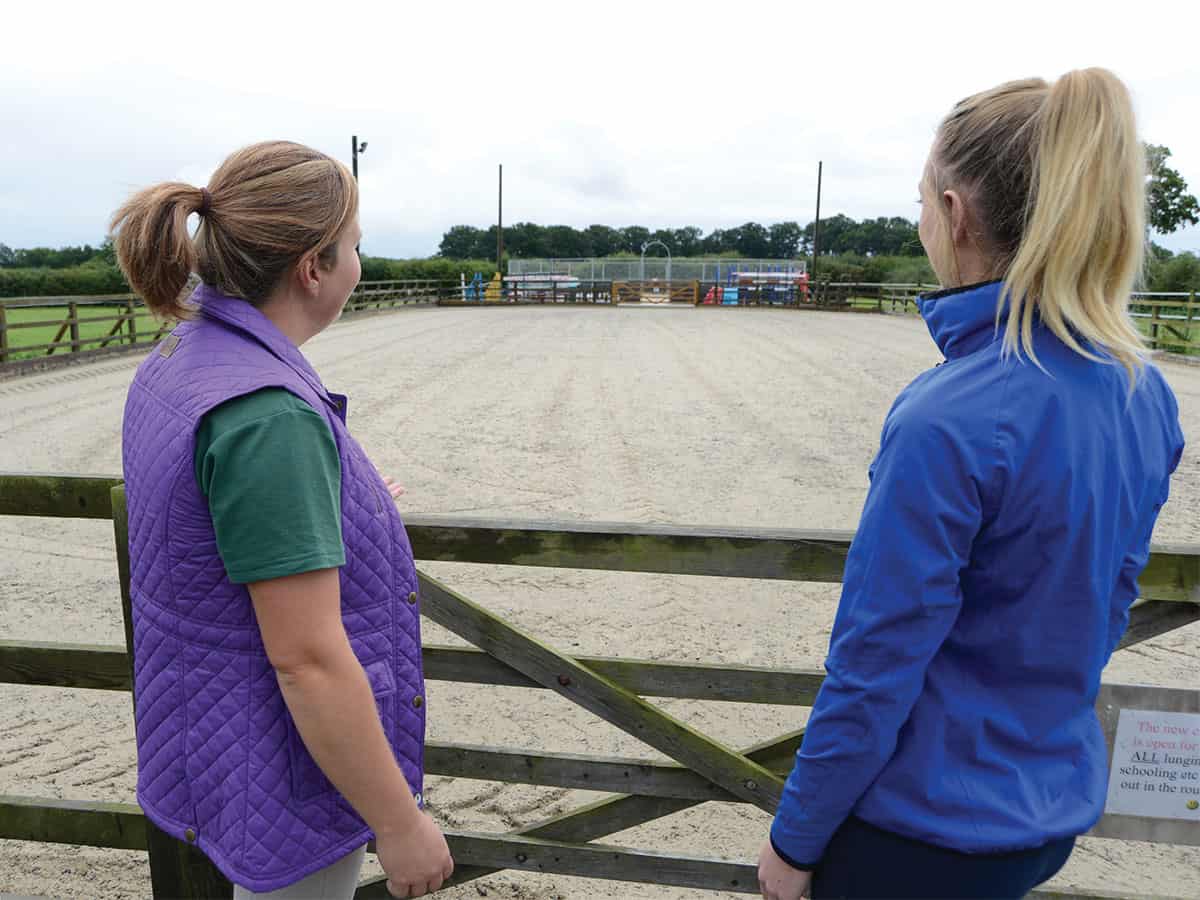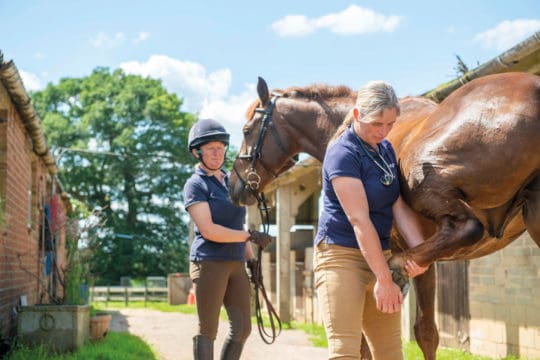Picking the right livery yard for your horse is a balancing act that requires weighing up the costs, services, facilities and location. Decide what’s most important to you and your horse with H&R’s guide

Moving your horse to a new yard can be very stressful, so it’s understandable that we avoid it unless it’s essential. We become worried about every detail. Will my horse like it there? Will they like him? Will I fit in with the other liveries? Will the staff look after him like I do?
Routine
Deciding how much of your horse’s care you are going to undertake often comes down to finances and work schedules. The more you do yourself, the cheaper your livery bill, but access to facilities can have a significant affect on the cost, even at DIY.
- There are many variations of livery – DIY, assisted DIY, part and full – so don’t assume something is included. Always ask exactly what you’re paying for as you might stumble upon additional charges for services you need.
- Consider what times you would like to visit your horse. Some yards have strict opening hours, usually as a security measure. However, this means if you want to go and see your horse early in the morning or late in the evening, you might be restricted.
- Enquire about the daily routine of the yard. It’s useful to know if all the horses are fed together, and if they’re all turned out at a similar time and brought in together. Your horse might be miserable if he’s the last left in the field or you might be charged for him to be brought in, which could increase your livery bill considerably.
- Does someone live on-site? You can get peace of mind from knowing that if there’s a break-in, your horse gets colic or there’s a fire, he is under close supervision.
- Field rotation to allow grass to rest and recover is an important part of land management. Ask what the yard system is for this because good pasture management makes a big difference to the quality of the grazing. Access to quality grazing in the summer can reduce your bills if he can live out for longer, and well-maintained land is less likely to become poached in the winter, reducing the chance of turnout restrictions.
- Most yards have a regular worming programme in operation. Ask what the routine is so that you know you’re not going to be putting your horse at risk.
- Whose responsibility is it to poo-pick, yours or the yard staff? Are there any rules about how often this must be done?
- If bedding, feed and hay are included, how much control will you have over the quantities he receives? When you view the yard, look at the bedding and cast your eye over the condition of the horses. Check the hay and feed stores, and ask whether you have a choice of what and how much your horse is fed.
- Ask whether you can use your own vet, farrier, instructor and physio, or whether there’s a yard policy to use the services of the same professionals.
Facilities
Having a yard with top-of-the-range facilities is undoubtedly amazing, but the more extravagant they are, the more you’re likely to pay. Consider what’s essential and what you can do without.
- If there’s an arena, make sure it’s well-maintained. Ask if there are jumps, whether the arena has to be booked and if there are times you can’t ride in there. If you’re regularly unable to use the facilities you’re paying for, you’ll end up frustrated.
- Find out what hacking you have easy access to, whether there is much roadwork to get there and if there is anyone else at the yard who you will be able to ride out with. Familiarise yourself with the nearby bridleways on a map or take your bike and go and explore before committing to a new area.
- A secure tack room, a well-maintained feed room and plenty of storage for your equine essentials are the basics which most of us consider to be necessary. When you’re being shown around, visualise how your belongings will fit.
- Wash bays, solariums and indoor arenas are unusual in all but the top-of-the-range yards, but sometimes these can come with extra charges, so be prepared and ask in advance.
- Ask to be shown around the fields and, while you’re doing so, look at the state of the fencing. Keeping your horse safe in his field is paramount, so if it’s in poor repair or dangerous, give the yard a miss. Don’t be tempted to move to a yard on a promise of things being fixed when you arrive.
- Have a look at the storage area for trailers and lorries, and ask about security and charges.
- Are there automatic field water mangers? If not, find out who’s job it is to keep them topped up and cleaned.
- Do you need to pay extra if you can’t attend when your vet or farrier is coming for a routine or emergency visit, or is this part of the yard’s service?
DIY-specific
- Ask if there is anywhere to store bedding and feed if you buy it in bulk.

Staff
We know that not all yards have staff, but if you’re considering using any paid assistance with your horse, there are some things to consider.
- Ask about the level of experience of anyone who’s going to be handling your horse. It’s wise to meet them and watch how they handle the horses on the yard. Ask about what insurance cover there is, in case they are injured when handling your horse.
Part- or full-livery-specific
- Will it always be the same person handling or riding your horse? Consistency of your horse’s care is really important. Regular, attentive staff will notice small changes in his demeanour and take the relevant action if you’re not around.
- If you’re going to be using the staff to exercise your horse, don’t be afraid to ask to watch them ride and find out what level they’re riding at. After all, you don’t want to put lots of work into your horse’s schooling only to find it’s being undone when you’re not there.
Other liveries
Your horse being happy is important, but it’s equally important that you’re happy at the yard, too. If you don’t feel you fit in or if you don’t get on with the other liveries, spending time at the yard can be miserable. Considering how much money you invest in your hobby, it’s important that you enjoy spending time at the yard with your horse.
- Find out what activities the other liveries take part in. It’s not that dressage riders can’t be friends with happy hackers, but it can be nice to have people to discuss your favourite discipline with.
- Speak to horsey professionals about the yard’s reputation. Farriers and instructors will know about the yards in the area, so it’s worth asking.
- Ask the current liveries what it’s like at the yard.
- Does the yard run social events or friendly competitions? If spending time with your horse is as much about the social scene, it’s important to find out.
- Do you want to bring your dog to the yard, or would you prefer to be on a yard where there aren’t any free-running dogs about? Likewise, consider whether you want to be on a yard that is child-friendly or want to avoid younger liveries altogether.
Your horse
Some people seem to have horses who are happy anywhere. Their owners can turn them out in a field with any other horse, they can live in or out, and they don’t worry if they’re in a field on their own. Most of us, however, aren’t so lucky. Our horses are quirky, sensitive creatures, so considering his individual needs is a must when deciding if the yard is for him.
- Is there provision for your horse to get as much turnout as he needs? Is turnout restricted or limited on a daily basis or due to weather, and is it possible to have 24/7 turnout in the summer? Is there someone on hand to bring him in if he’s careering around his field, wanting to come in?
- If you want individual turnout, make sure the yard you’re moving to can cater for it. If it’s group turnout you’re after, ask how they match the horses up and what the contingency plan is if your horse doesn’t settle well within the group. It also helps to know how they plan to introduce your horse.
- What is your horse’s temperament like? Would he prefer a large, busy livery yard with a strict routine, or would he be happier in a smaller, quieter yard where owners are doing their own thing?
- If you’ve got a large horse, make sure the stable is big enough for him to lie down in comfortably. The British Horse Society recommends that a stable should be a minimum of 12x12ft for an average-sized horse.
Whichever yard you end up moving to, be sure to know your rights as a livery, which should be outlined in the contract, and understand your obligations to the yard owner. For there to be harmony, it’s important that people are considerate and kind to each other. If you’re unhappy at your current yard, don’t be afraid to find somewhere else for him to live. He will adapt and usually he’ll be happier if you’re happy, too.
Your Comments
One thought on “Choosing a livery yard”
Leave a Reply
You must be logged in to post a comment.









Heya.
This is a great idea. I strongly recommend taking some colourful photos of each livery yard in question. Make some brief summary research notes as well. Call or email them in order to request a viewing appointment to see around the yard. Ask about yard events and insurance policies too. Good luck.
Discuss your goals, day to day yard schedules and prices as well. Talk privately in the yard office if possible. When looking over the entire yard for the first time try to see it objectively and factually. Organise all the yard information using a cheap folder for reference. Learn all you can but remain alert.
Never assume that the first yard you tour will have a vacancy or the skills that are required to meet the needs of your horse. Try to see at least two. Use a printed off checklist to ensure you talk about everything you need to know in advance. Shop around carefully and also compare your set of notes on each yard.